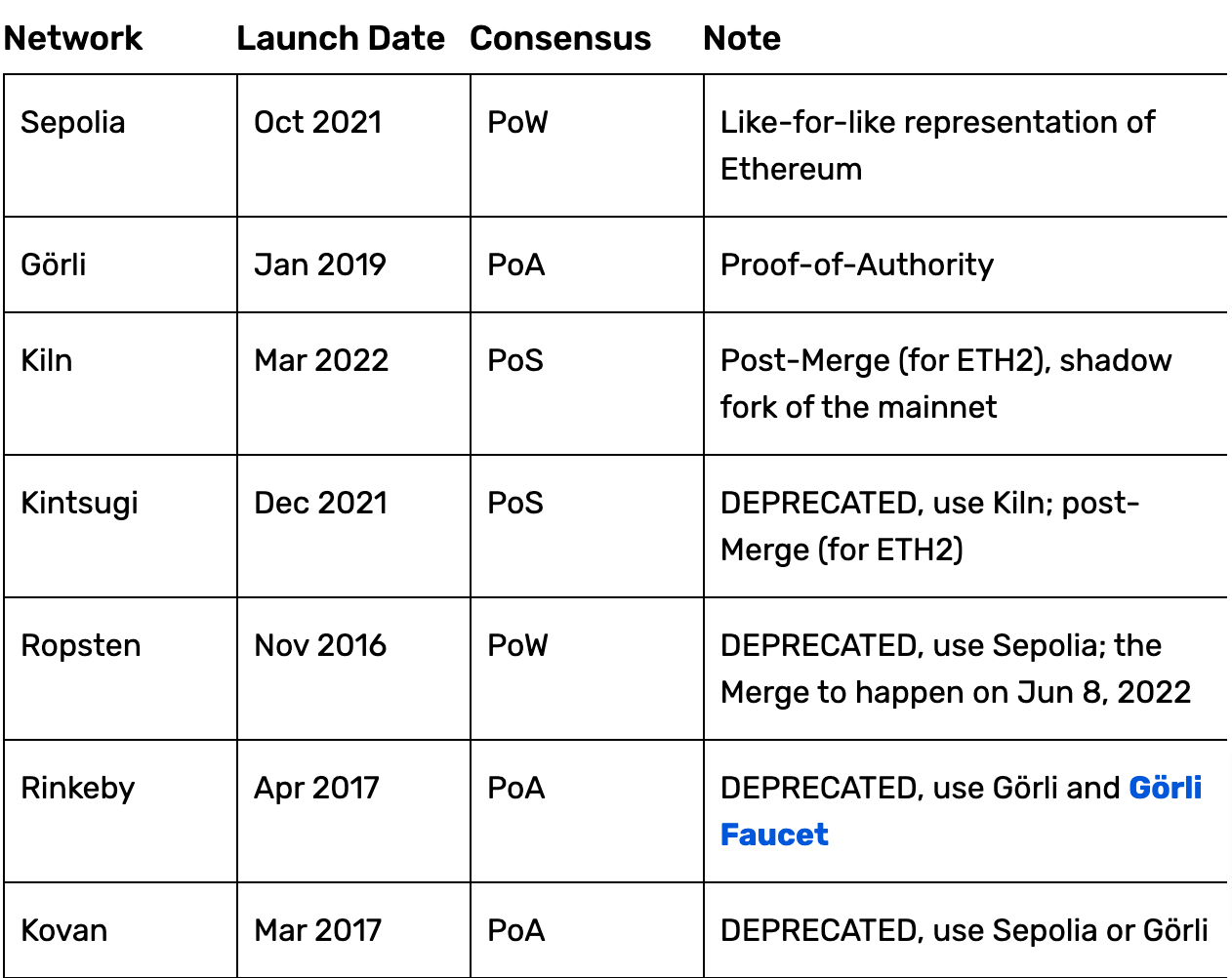
What is the Kintsugi estnet?
Written by Alchemy
As the Ethereum Foundation prepared to launch the long-anticipated consensus layer (ETH 2.0), the Kintsugi test network marked the first public exposure of the post-merge Ethereum environment with the transition to proof of stake.
In this article, you’ll learn how the Kintsugi testnet originated and why it existed. You’ll also learn how to get and send testnet Ether and tools to kickstart your development.
WARNING: The Kintsugi testnet has been DEPRECATED. This article is purely informational. Instead, use the Sepolia testnet for testing smart contracts on a post-merge testnet.
What is the Kintsugi testnet?
The Kintsugi testnet was the first major test network to experiment and familiarize the public with Ethereum in its post-merge context. Launched in December 2021 after four short-lived testnets, the Kintsugi testnet was the first public network to undergo the Merge in preparation for the long-awaited consensus layer.
Created and maintained by the Ethereum Foundation, the organization behind the community-driven development of the Ethereum chain, the Kintsugi merge testnet launched as a proof of work (PoW) network in parallel with a Beacon Chain running proof of stake (PoS).
Throughout the Merge, the Kitsugi network then transitioned into using the PoS mechanism. As a public post-merge Ethereum testnet, Kintsugi sought to face rigorous tests for potential issues and attack vectors.
How was the Kintsugi testnet different from other testnets?
The Kintsugi testnet was designed specifically to test the Ethereum network after the merge of a PoW chain and the Beacon Chain. Hence, the network provided Ethereum developers with a safe environment to test their applications on a theoretical post-merge Ethereum chain and prepare for the consensus network.
Other testnets exist for developers to test their applications and contracts before deploying on the PoS mainnet. As a developer, it boils down to their need to choose a certain testnet.

The actual programming of applications on the testnet doesn’t change from the mainnet. The Kintsugi testnet maintained the same developer experience as the mainnet. Ethereum launched the testnet to catch any edge cases of a post-merge PoS Ethereum chain.
What happened to the Kintsugi testnet?
The Kintsugi testnet was designed to identify major bugs with the post-Merge Ethereum environment. During the testing phase, it was forked into multiple chains causing it to be deprecated in favor of a new post-merge testnet, Kiln.
A month after the launch, the Kintsugi testnet hit a significant roadblock. Among countless tests and attack vectors the testnet underwent, Marius van der Wijden, an Ethereum core developer with the Geth client team, was able to cause the network to split twice.
By altering the hash of a newly submitted block to its parent hash, van der Wijden’s test forced conflicts between different Ethereum clients. Whereas the expected result was all clients rejecting such a faulty block, some clients accepted the block as it used the cache of the valid parent block.
The Geth clients rejected the fault block, while Nethermind and Besu clients accepted the block, leading to the first split. Then, some Geth nodes running variations of the client disagreed on the result internally, causing the second network split.
Because the Kintsugi network lost the ability to finalize transactions due to multiple forks, the Ethereum Foundation introduced the Kiln Merge testnet in March 2022 to test the Merge once again, hoping to transition existing long-lived testnets finally.
Since then, the Kintsugi testnet has been deprecated, and the Kiln network was used to carry out the first mainnet “shadow fork.”
Conclusion
The launch of the Kintsugi testnet marked a significant milestone for the Ethereum Foundation in completing The Merge. By opening the Kintsugi testnet up to Web3 developers, the Ethereum Foundation onboarded existing developers to deploy applications and battle-test the network with edge cases.
Although the Kintsugi network was deprecated in favor of the Kiln merge testnet, the network served its purpose of catching significant bugs.
To get testnet ETH on popular testnets, create a free Alchemy account. To learn more about testnets, visit Alchemy’s ever-expanding catalog of developer resources on Ethereum.

Related overviews
Building on Base? Get free Sepolia ETH and start testing your app!
Learn How to Migrate to the New Ethereum Testnet Sepolia From Goerli
Migrating dApps and Bridging Goerli ETH to Optimism

Build blockchain magic
Alchemy combines the most powerful web3 developer products and tools with resources, community and legendary support.